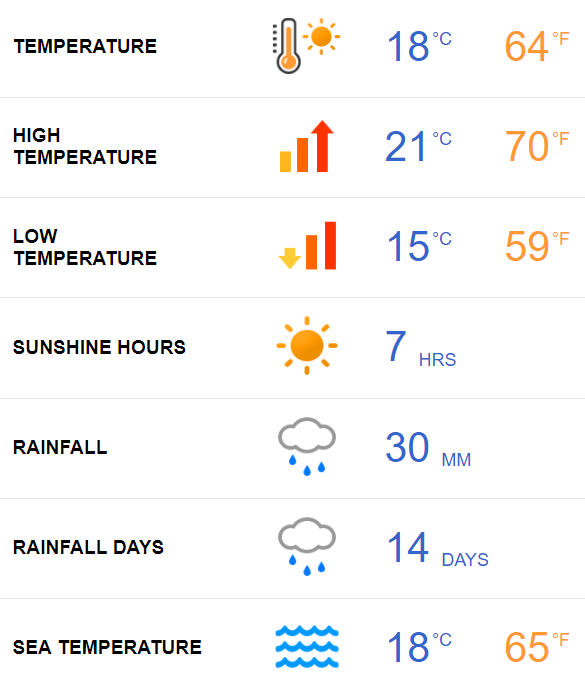Weather

December is often a month associated with crisp holiday evenings, cold temperatures and snow. However, in Auckland the month of December ushers in the first month of summer. The beaches and harbours become more crowded as the temperature rises, and Auckland's neighborhoods become lively with outdoor dining and long weekend brunches. It is a month of increased sunshine and temperatures, with a corresponding decrease in precipitation – a great time for visitors!
Sunshine
The stronger sunlight and fewer overcast days mean the average hours of daily sunlight goes up from November to December. While the spring months of October and November have a consistent average 6 hours of sunlight per day, December has an average 7 hours.
Temperature
As well, the average temperature continues a slow, steady climb throughout the month of December. The average temperature for the month is a mild 18°C (64°F). As summer continues in January and February, the average temperature will only become slightly higher at 20°C (68°F). The average high temperature is 21°C (70°F).
Meanwhile, the overnight low temperature can still be crisp. The average low temperature for December remains at 15°C (59°C). Such colder overnight temperatures are common across New Zealand's North Island, including in Wellington and in other Oceanic cities such as Melbourne, Australia.
Sea Temperature
The sea temperature in both the Pacific Ocean and Tasman Sea, which both border the city of Auckland, is also warming. However, the average sea temperature for the month is only 18°C (64°F), and most visitors who plan to participate in watersports or surfing will want a wetsuit.
Rain
The summer months are drier than the winter months, and in December the average amount of precipitation is 10 mm less than in September, October and November. The month of December receives an average 30 mm of precipitation, which is similar to what visitors should expect in January and February as well. There are an average 14 rainy days during the month.
What to wear in Auckland
New Zealand is typically an informal place so pack casually for comfort.
Smart casual clothes are acceptable at most restaurants and night-spots.
Due to the lack of ozone layer, the New Zealand sun is especially strong so wear plenty of protection. Opt for screening products with a minimum SPF 30, or better still SPF 50 and apply every 3 hours in the summer sun. Products are easy to buy in supermarkets, chemists and petrol stations, plus many venues with outside seating provide it for free - you just need to ask.
Don't forget your sunhat and sunglasses too.
Famous for having four seasons in one day, our advice at all times is to pack a light jacket or sweater just in case the weather turns cooler, or if you're visiting higher altitudes. You can also expect some rain, so include a light raincoat and travel umbrella.
Clever layering is the key to dressing for changeable weather.
Weather in Auckland during December

